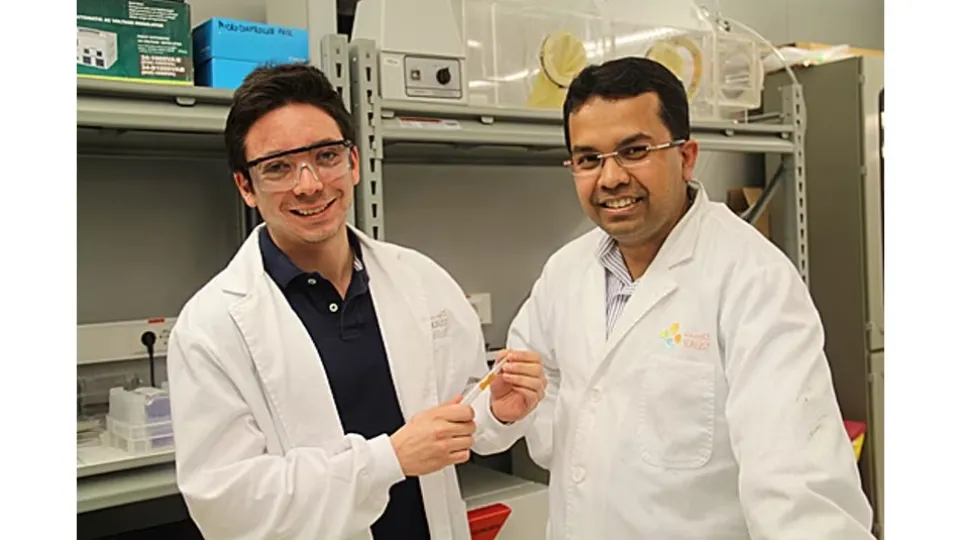
KAUST team achieves remarkable flexibility with Silicon
KAUST's Integrated Nanotechnology Lab are working to transform cutting-edge materials to make high-performance devices, but also about portability - they will have to be flexible, stretchable and reconfigurable
About
-By Caitlin Clark
"Today we live in a world centered on information technologies," said Muhammad Mustafa Hussain, KAUST Associate Professor of Electrical Engineering. "This is taking us to a future where electronics will be not only about high-performance devices but also about portability - they will have to be flexible, stretchable and reconfigurable. My team and I in KAUST's Integrated Nanotechnology Lab are working to transform cutting-edge complementary metal-oxide-semiconductor (CMOS) technology into flexible technology."
In a paper recently published in the high-impact journal ACS Nano (DOI: 10.1021/nn5041608), Prof. Hussain and his team describe their use of industry-compatible processes to "demonstrate the most advanced transistor architecture on a flexible platform, with our transistor obtaining a bending radius of 0.5 mm," he said. "The process used does not degrade the device performance, and helps us show the path to true high-performance flexible electronics."
Galo Torres Seville, a KAUST Ph.D. student in Hussain's group and the first author of the paper, noted that "our objectives as a research group is to find a bridge between portable and high-performance electronics that will one day allow us to perform very complex and time-consuming tasks with our portable devices. In our recent work, we have pushed inorganic electronics to a bending radius never shown before."
The transistor built by Hussain's team is constructed of a monocrystalline, silicon-based substrate. Silicon is a material that "is the most highly used in today's digital world. More than 90% of electronics are based on silicon micro- and nanofabrication processes," said Hussain.
However, there are some drawbacks to silicon electronics, including silicon's brittleness and lack of flexibility. To counter these problems, researchers have experimented using polymer-based substrates, 2D single-walled carbon nanotubes, and 2D graphene to produce flexible electronics. But because of issues with these materials, Hussain's team has concentrated on a different fabrication process using silicon to make electronics flexible " without compromising cost, yield, performance, and efficiency", said Hussain.
"We hope that we can awaken the curiosity of researchers around the world to persue a common objective that will one day allow us to have devices that today we can only dream about." -Galo Torres Seville
Read the full article
